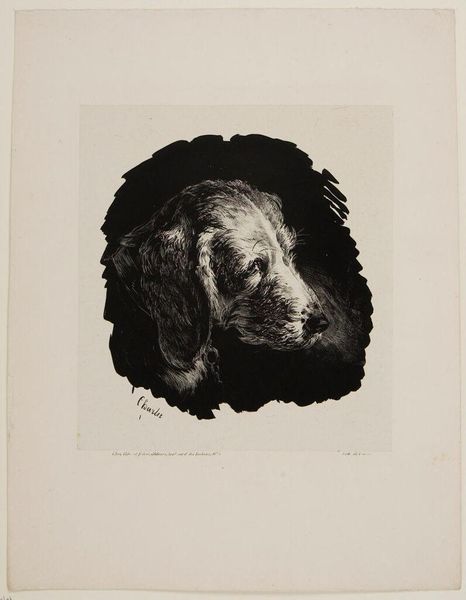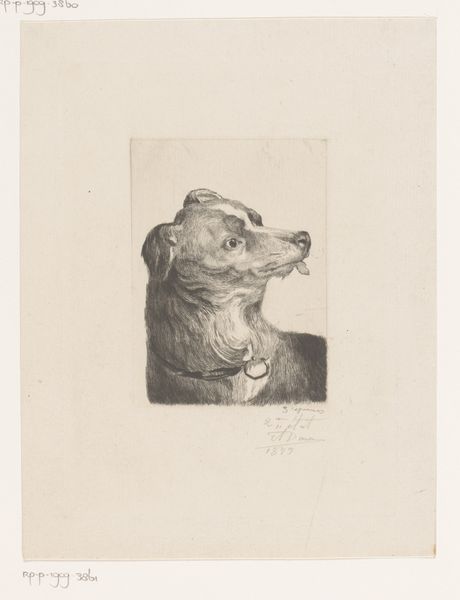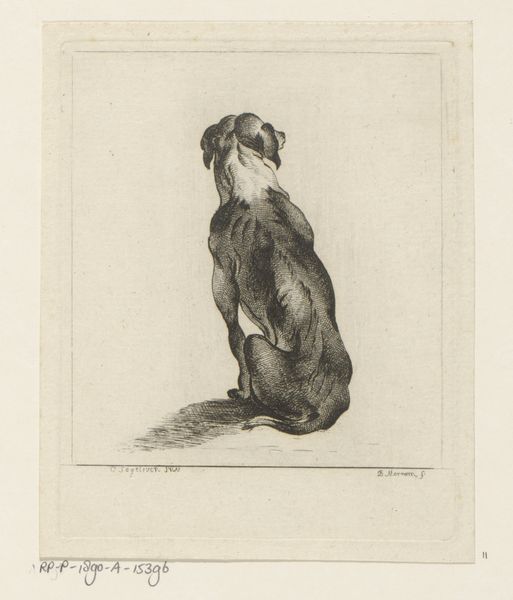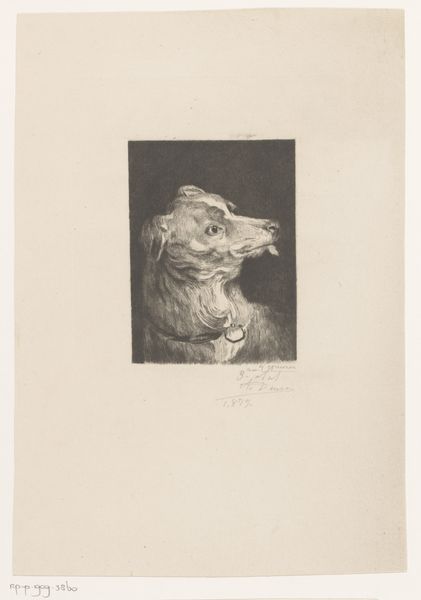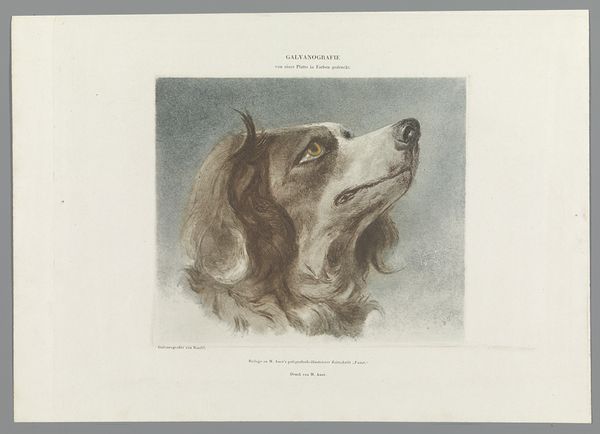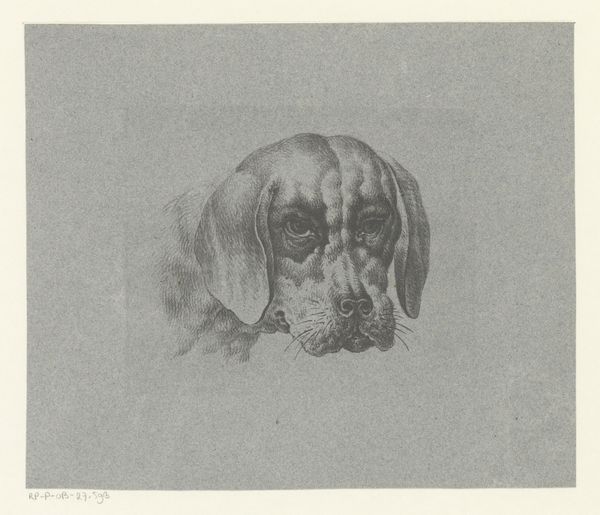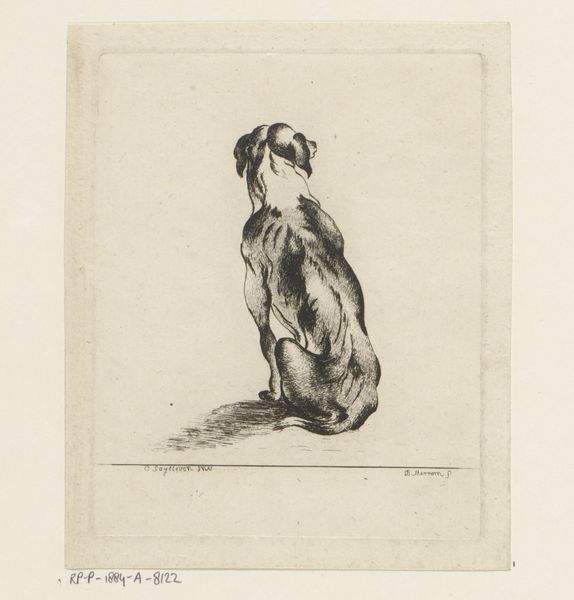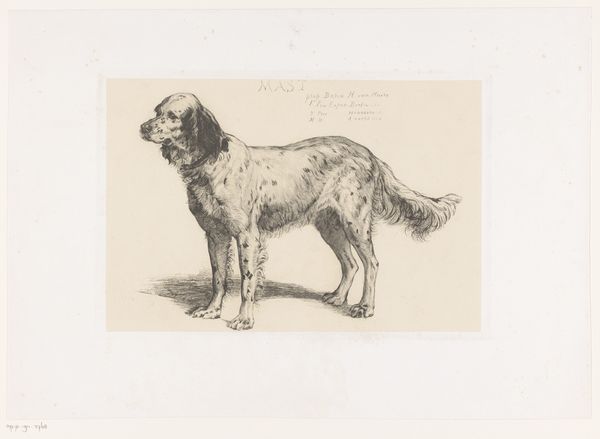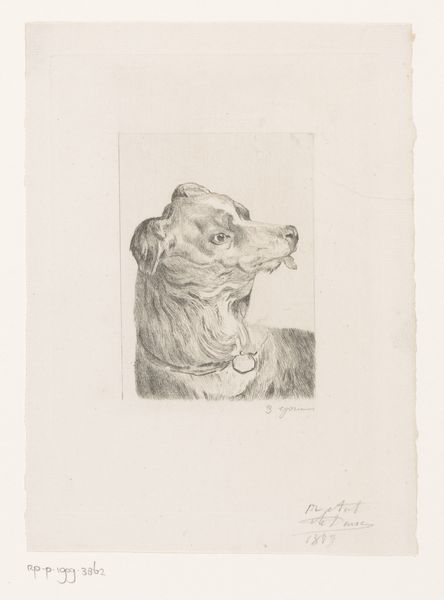
drawing, graphite
#
portrait
#
pencil drawn
#
drawing
#
animal
#
dog
#
romanticism
#
graphite
#
realism
Dimensions: height 355 mm, width 268 mm
Copyright: Rijks Museum: Open Domain
Editor: This is "Hondenkop" from 1828, by Nicolas Toussaint Charlet. It’s a graphite drawing of a dog’s head, housed at the Rijksmuseum. It feels incredibly intimate, like a captured moment. What strikes you about this piece? Curator: What stands out to me is the rise of popular imagery during this time. Consider the context. 1828... lithography was becoming more widespread. How do you think that might influence Charlet's choice to create, and then circulate, a drawing of this sort? What kind of audience was Charlet attempting to attract by choosing to portray such a creature, especially given the artistic conventions and hierarchies of the time? Editor: It feels like he's democratizing art in a way, making it more accessible and relatable. I mean, it's a dog, not a king or a religious scene. Was there resistance to this kind of subject matter in fine art? Curator: Precisely. Art academies and their patrons often had rigid views on what constituted “high art”. Depicting common subjects challenged those established hierarchies. We can look at the rise of the middle class and how artists started catering to their interests and sensibilities. Do you notice anything about how the dog is positioned, almost in the way one would depict a person in a portrait? Editor: Definitely. There's such detail in its eyes, and the shading makes it feel like it has a real personality. So, by elevating a "common" animal, he was making a subtle political statement, maybe? Curator: Perhaps. Or reflecting societal changes. It invites us to consider how art reflects and shapes our perceptions of the world and even our pets. The dog becomes a site where shifting social values become visible. What’s your final thought on it? Editor: I see it now as less about a dog and more about a society redefining its values through the art it chooses to celebrate. Curator: Exactly! It goes to show that even a seemingly simple drawing can reveal complex cultural dynamics.
Comments
No comments
Be the first to comment and join the conversation on the ultimate creative platform.
